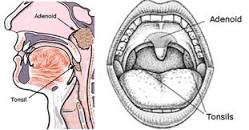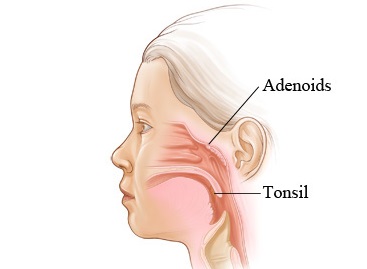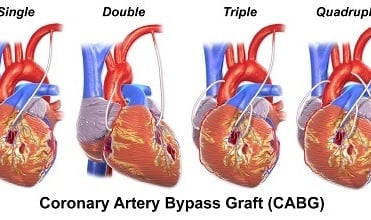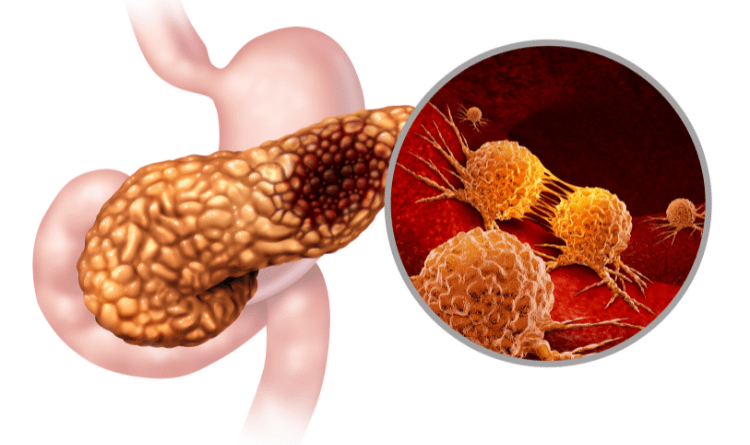Adenoid and Tonsil Surgery in Children

What are Adenoids and Tonsils?
Adenoids and tonsils are primary lymphoid organs in children responsible for immunity through antigen presentation. In common words, these organs/tissues are present in all children from birth and are part of the generation of the adequate immune response through the childhood years. Though tonsils are present in oropharynx or throat and can be seen or assessed through simple throat examination, adenoids are present in the nasopharynx or deep behind the nasal cavity (nose), and are hidden from ordinary examination and visualization.

These lymphoid organs commonly get hypertrophied/enlarged from 2 to 6 years of age as a response to various upper respiratory infections and allergies.
Acute infection and enlargement of these organs (Acute tonsillitis/acute adenoiditis) are characterized by acute onset pain in the throat, fever, difficulty swallowing, nasal obstruction, nasal discharge or postnasal drip. Such infections or illnesses are managed by short term antibiotic courses with symptomatic drugs for allergy control, pain/fever control and observation.
Chronic tonsillitis/adenoiditis, however, is an infection or inflammation of these organs lasting by definition, more than 12 weeks, though commonly months and years altogether.
Chronic inflammation leads to long-standing hypertrophy/enlargement of these organs or recurrent/persistent inflammation thus causing a myriad of clinical issues:
- Recurrent /persistent nasal obstruction (adenoid hypertrophy) which is more pronounced in children in lying down position or while sleeping, thus causing mouth breathing in sleep or while being awake as well in severe cases. Such long-standing nasal obstruction or mouth breathing in children can lead to issues such as nighttime bed-wetting, obesity, raised blood pressure, facial mis-growth and reduced exercise performance.
- Persistent/ frequently recurrent nasal discharge, postnasal drip causing frequent throat clearing, chronic or long-standing sinusitis (inflammation of nose and sinuses) thus causing headaches.
- Frequent or long-standing ear infections (Otitis media with or without effusion) leading to frequent earaches in children. Consequent middle ear effusion often leads to hearing loss in children which often goes undetected in early stages being confused by caregivers as a distraction or lack of attentiveness.
- Chronic inflammation of tonsils leads to restricted space in pharynx, thus causing snoring, disturbed sleep, and difficulty in swallowing due to sheer size of enlarged tonsils restricting the movement of food through pharynx/throat.
- The presence of long-standing infection in adenoids and tonsils leads to a year-long reservoir of bacterial infections due to biofilms leading to frequent nasal, sinus, throat and ear infections. Such infections often need multiple antibiotic courses and possible hospital admissions in the presence of refractory infections or complications.
Role of Surgery
Surgical removal of adenoids is termed as adenoidectomy whereas removal of tonsils is termed as tonsillectomy. Adenoidectomy is performed when adenoid enlargement causes persistent/long-standing nocturnal or day time nasal obstruction and mouth breathing. It can be associated in children with persistent nasal discharge with or without symptoms of recurrent or chronic sinusitis. Tonsillectomy is performed for recurrent tonsillitis or severe enlargement of tonsillitis causing disordered sleep or swallowing.
FAQs about Adenoid and Tonsil
1. Are adenoids and tonsils always removed together surgically?
Ans: No. Adenoids are removed for indications of nasal or ear pathologies whereas tonsils are removed for throat issues. While they can be removed together in one setting in case of indications pertaining to both nose and throat, it isn’t necessary to do so if indications for one do not exist. Adenoidectomy is performed more commonly in children than tonsillectomy in present times.
2. At what age can surgery be done in case of kids?
Ans: Adenoidectomy/tonsillectomy can be performed in children from 2 years onwards in case of symptoms and clinical judgement. Mild to moderate recurrent symptoms can be observed on medical management till the child is 6-7 years of age as most adenoids or tonsils are expected to regress by this age. Post this age, it often is an indefinite wait.
3. How is this surgery done and is it safe in little children?
Ans: Adenoidectomy is done endoscopically through the nose and oral cavity (mouth), with no external incisions or scars on face or neck. Tonsillectomy is done through oral cavity. Both the procedures are done through powered instrumentation/lasers or plasma ablation techniques leading to minimal blood loss or complications. Though all surgeries have potential complications including those of general anesthesia, adenotonsillectomy are one of the commonest surgeries performed in children worldwide, with an extremely low rate of complications, most of which can be managed by the operating team and institution.
4. What are the common or salient complications of tonsillectomy?
Ans: Common side effects of tonsillectomy are post-operative throat pain necessitating dietary modifications, lasting from 2nd post-operative day to 12th. Delayed oral or nasal bleeding due to secondary infections can occur occasionally from 5th to 8th post-operative day and can be managed conservatively by in-patient observation and antibiotics.
5. Are there any long-term effects of the removal of adenoids/tonsils on immunity?
Ans: As adenoids and tonsils are primary lymphoid organs, surgical removal of these at a very early age can have potential adverse effects on immunity and is a matter of research and debate. However, the presence of recurrent upper respiratory infections and issues of long-term nasal obstruction, disordered sleep and ear
infections in growing children in the era of widespread and concerning antibiotic resistance need to be discussed with pediatricians and ENT surgeons.
Manipal hospitals Dwarka is an apex referral institution in surgical management of pediatric airway disorders with one of the most advanced operating theatres, instrumentation and technical staff. The exceptional pediatric team including pediatric and neonatal intensive care complement the surgical management of airway disorders in obtaining optimal outcomes in this fragile population.
Best ENT Surgeons in India
- Dr. Biswarup Mukherjee: A renowned ENT Surgeon and Otolaryngologist with 29 years of experience.
- Dr. EC Vinaya Kumar: He is a well-known ENT Specialist practicing successfully for more than 33 years.
- Dr. Koka Ram Babu: A well-known ENT Specialist practicing successfully for 42+ years.
- Dr. K Krishna Kumar: A leading ENT surgeon with 47+ years of experience.
- Dr. EV Raman: A skilled ENT surgeon with experience of more than 38 years.
Best ENT Hospitals in India
- Shalby Hospital, Ahmedabad: It is a multi-specialty hospital accredited by NABH, NABL, ISO 9001.
- Fortis Memorial Research Institute, Gurgaon: The Otorhinolaryngology unit at Fortis Memorial Hospital is well-known for treating common conditions such as head & neck cancer, speech & voice disorders, hearing loss, etc.
- Artemis Hospital, Gurgaon: The ENT unit is well-armed with state-of-the-art infrastructure that includes devices such as Zeiss microscope, Storz HD system, Holmium Laser, Narrow Band imaging, micro debrider system, etc.
- Apollo Hospitals, Greams Road, Chennai: The hospital is declared as the Centre of Excellence by the Government of India.
- Indraprastha Apollo Hospital, New Delhi: It is one of the best multi-specialty hospitals in India.
Get in Touch with Medical Experts
Most Searched Blog

Heart Surgery

Heart Transplant

Atrial Septal Defect
